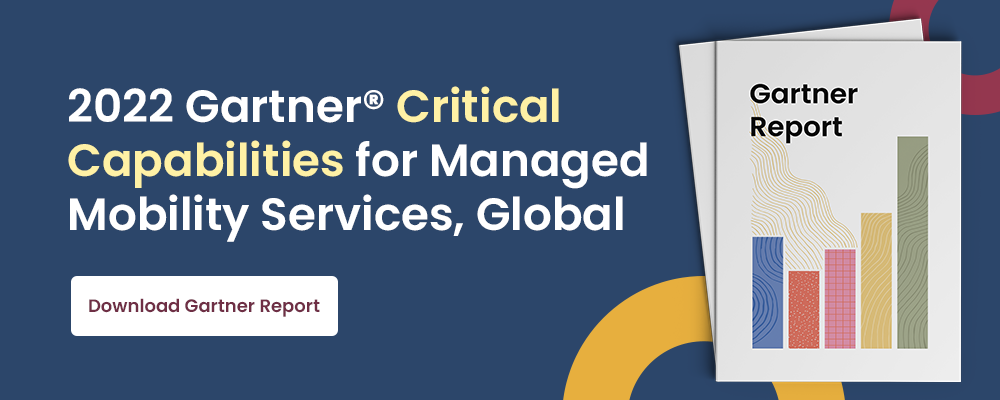Application development is an important part of digitalisation, but there is more to app development than just "doing it" to create value for businesses and users.
Developing apps is a natural step to take when a company wants to digitise its operations, but creating an application is not something that happens overnight. It requires a thorough understanding of how the users will perform their work digitally, which is why it is so important to spend time on the right things. For an app to be successful for businesses, it is critical that it provides value to both business and end users.
For private individuals, using various apps is a matter of course today. We use them to check email, scroll around on Instagram or want to know where a package we have ordered is located. But this is where it gets interesting: would you use an app you don't really like? For example, an app that does not work well, is hard to navigate, or contains so many features that it feels unwieldy on mobile? Probably not!
Then, what actually makes you like or dislike an app? One would think that it has a lot to do with it providing value, that you feel like you are getting something from it. Otherwise, you will most likely go to the app store and choose another, better, more user-friendly version.
Read more: Maximise Your Mobile Apps with Professional App Management
Maximising efficiency and user experience with the right app architecture
A company in the process of digitising its operations begins to look into developing apps as a natural step in its digital transformation. And it is true that a good app with the right functions can both facilitate the work and make it more efficient. However, it does not happen overnight. First, it is important to be aware of the base. An app developed by a company, whose employees are the end users, cannot be worse than the apps that the employees use privately. Today's incredibly high demands on user-friendliness put great pressure on IT departments, which often develop or are part of producing data for these apps.
This is where the app's value comes into play, something that is crucial for it to be successful for both businesses and end users. Otherwise, the risk is overwhelmingly high that the app will not be used and in these cases the development will ultimately be little more than a costly story, instead of something that makes things more efficient and easier.
And if user experience – or UX, is paramount, the other side of the coin that should be carefully evaluated is the app architecture that will be used for the app’s development. Similar to desktop applications, mobiles have more than one option to choose from. Each is suitable for different use cases, and they should be considered before starting development.
- Native application
A native application is developed separately for each platform and is often built using the platform's (for example iOS, Android, or Windows) components. This means that with a native application you can also use several other functions that you have in your smartphone in the app, such as gyroscope and cross-application interactions. It is one of the main advantages of a native app. Another benefit is that it allows for a better, more dedicated user experience for the user, tailored to the devices used. A native application is downloaded directly to your mobile device and can therefore be used without the need for an internet connection. - Native Cross-Platform
Native applications might be the standard for most organisations, but there is an alternative that should be kept in mind: Native cross platform. With tools like React Native, it is possible to develop mobile apps that can be deployed to both iOS and Android devices from a single shared code base. This makes development cheaper as you can achieve the same result with a single team of developers, instead of needing a dedicated team per platform. The other side of the coin is that designing applications using native cross-platform tends to be less tailored to the specific platform and ends up creating a very similar experience on both without using the Apple or Google specific patterns that users have grown accustomed to.
- Web application
A web application is not really an app in the true sense of the word, it's more like a website that runs in a browser. In many cases, however, it feels and is experienced as an app, but unlike a native application, a web app requires an internet connection. A web app that is not installed directly on the phone means that you do not have access to the same functions as via a native app and have a harder time handling more demanding graphics. - Progressive web application
The next evolution of web apps is called progressive web apps (PWAs). The focus of PWAs is mobile development and through mechanisms such as service workers, PWAs can use many functionalities native to mobile devices that are not available on regular web apps. The main difference can be seen as follows: Web apps are built for desktops and can adjust to mobile screens to some extent, while PWAs are built with a mobile-first approach and can also run on desktop but are more suited to smaller screens. Not everything that can be done with native apps can be achieved with PWAs, but the gap is closing every year. Apart from specific use cases such as games and offline functionalities, there is not much that cannot be done with PWAs. - Hybrid application
A hybrid app is exactly what it sounds like: a combination of a native app and a web app. Just like native apps, you can download hybrid applications directly to your smartphone and gain access to some of the phone's functions. And, similar to web apps, a hybrid app relies on the ability to render through a browser, as long as the browser is embedded in the app. However, hybrid apps present some security issues that Apple and Google do not want to have to deal with, since the web content can be changed dynamically without reviews from the platform owners. As a result, it has become almost impossible to publish hybrid apps through public stores, and this option is generally only available for deployment through business device management platforms such as Intune, Mobile Iron or similar.
- Low-Code Application Platform (LCAP)
Low-code and no-code application platforms are exactly what they sound like. They allow everyone to drag and drop template components together to create apps quickly and with little to no coding experience. This new trend refers to users who create these apps as "citizen developers" and opens many possibilities for businesses to create applications rapidly and easily. There are limitations to this option, such as those to existing components, or at least to components created for the users. It is also impossible to publish these apps on official stores, and deployment through management frontends requires some know-how, which Techstep can provide. - SuperApps
For businesses that want to create their own ecosystem, SuperApps are the way to go. But SupperApps are really only an option for very large companies that have their entire business on mobile and want to be in control of the entire chain, from development to deployment to sales and maintenance. Baidoo is a good example; it effectively replaces Android on devices and substitutes itself from the existing operating system. As a result, SuperApps are more a platform that businesses might need to learn to work with and deliver towards, rather than a real option for themselves.
A great user experience provides value
For an app to provide value, it must first provide a great user experience that is relevant for every end user. Let's say a company develops an HR app that includes features for the 10 activities/tasks an employee needs to do daily. If the app provides the platform that works best and contains all the functions that the employee needs, is comfortable to use and allows them to do everything they need from their device, it will be successful. But if the scenario goes the other way, that an app has a poor design, does not work well online or is cumbersome - then it will not be used! No matter how much it is made mandatory, the users will just find easier ways to do their tasks.
A factor that plays a particularly important role here is ease of use and the main goal should always be that the user wants to use it, it should never feel like a compulsion. Just in the same way that Instagram or the countless apps that we often use in private. But to achieve that mindset with the end user, the app must be easy to use with a limited set of functions that are clear. An app should feel so delicious that you want to taste it.
Another important parameter that creates value is that the app is smart. For example, say you're going to use a time tracking app. That task may not be something all people love to do, but it is still important. If the app you have for time reporting is smart and more or less fills in everything you have done during the day and you only need to click OK, you will more or less automatically like the app. Simple, flexible and fast! A concrete example of this is how Skateverket’s app comes with your taxes prefilled when it comes time to declare your revenue. In 95% of cases, it is just a matter of controlling the number already entered, validating and you get to see exactly the outcome.
Platform for company apps
Two other key factors to consider when your company wants to create an app are the infrastructure and the platform on which the app will be located. Namely, apps need to be executed in an environment where the backward compatibility of the operating system and hardware does not change much, as for example in iOS. It is also important that the hardware you use provides the specific functions that you want the app to have, which in turn increases the ROI for the intended use of the app.
To ensure that reliable hardware is a must, we would even say that it is a key factor for the success of a digital transformation. From our experience at Techstep, we know that Apple's devices meet the requirements and standards of today.
There is a significant difference between developing an app for consumers compared to developing an app for enterprise. When an app is to be used by a company, security, architecture, and distribution play a crucial role, which is also one reason why the choice of platform is so important. An app for enterprise requires, among other things, integrations with back-office systems and often also integrations with other systems, such as those containing information about prices and employees. As a result, an app for enterprise is generally more advanced than an app for consumers.
Get the help of an experienced mobility partner who puts safety in focus
There are some factors to consider when companies develop an app. Security and privacy are some of the most key factors and are one of the most central parts for mobility in general - app development is no exception. The more functionality you want to fill an app with, the more important security becomes. We at Techstep work closely with Apple and with the help of their and our technologies we create user experiences that the end user likes and that are secure - throughout the device's entire life cycle.
With Techstep as a partner for digitisation in the mobile arena, companies have access to everything they need to address opportunities and minimize challenges. From device purchases, management, integration, app innovation, maintenance, and environmental recovery of the devices. By partnering with us, you gain a springboard to already proven methods and techniques, leveraging our solid experience from numerous use cases across different industry verticals.


/TCO%20calculate3.jpg)
/TCO%20managers2.jpg)
